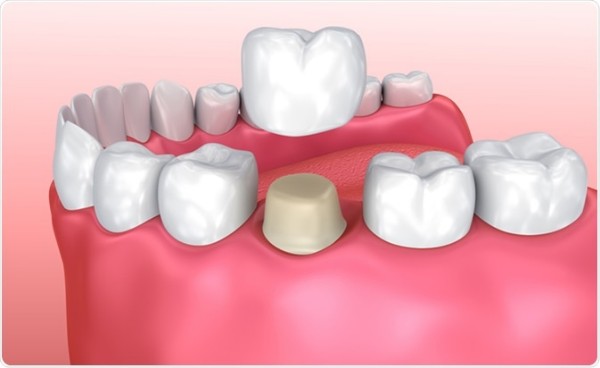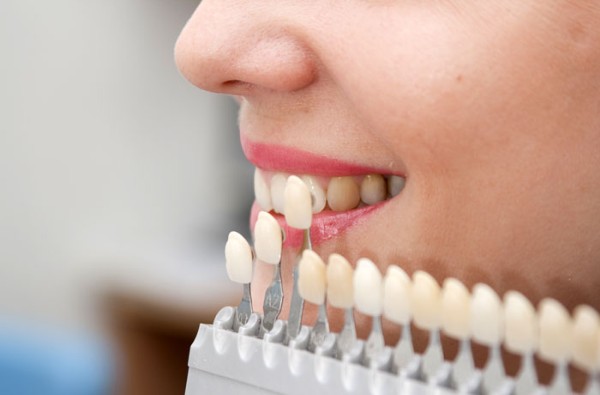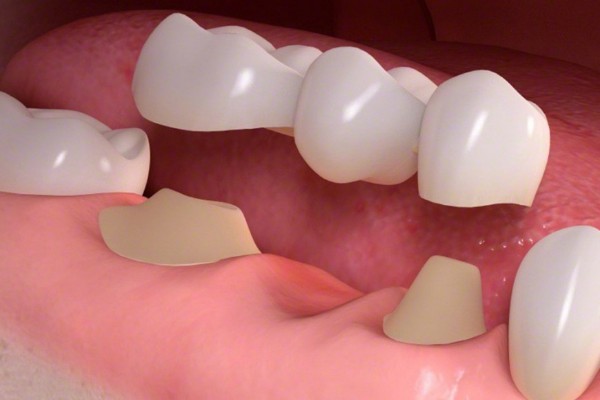Damaged teeth - whether broken or fragmented, do not just look ugly. They may also severely impact your functional capacity to chew and digest food. Installing fixed prosthodontics such as dental crowns and bridges allow for your tooth to be salvaged, instead of extracted.
Root canal treatment may sometimes be necessary prior to these procedures.
To install these tooth prosthetics, the targetted teeth are first decreased in size. This adjustment means that an added protective covering layer can now be permanently fixed to the tooth.
Dental crowns and bridges are custom made by your dentist in Singapore, to the individual needs of the patient. How will you know what you require?
Much like fingerprints, no two dental crowns or bridges are likely to ever be the same!
What determines dental crown costs in Singapore?
Dental crowns are essentially caps placed over teeth like a helmet. They replace the damaged portion of the tooth.
The cost of dental crowns differs to a large extent, and depends on several factors:
- How much experience and training the dentist has
- Type/Material/Brand of dental crown used
- Size, location and condition of the tooth in question
- Whether additional procedures are required (e.g.: root canal, bone graft, implant screws)
- The type of diagnostic imaging used (eg. X-ray, CBCT scan)
How do I know if I need a dental crown?

Dental crowns are most often used:
When a direct filling (made of amalgam/composite resin) may not be strong enough to repair the tooth anymore. This is usually the case when a cavity has grown too large. The remaining natural tooth structure has become too or too weak to withstand normal biting forces.
To protect a structurally compromised tooth from further wear and tear. This could be due to a very large preexisting filling (Point 1) or perhaps a tooth with a history of crack and/or fracture that is starting to break down. This helps buy time for your teeth to bite another day!
To cover and re-contour an otherwise misshapen or discoloured tooth as a form of aesthetic treatment. A dental crown can help to restore both form and function in these situations. Yes, sometimes you can have your cake and eat it too!
After endodontics (root canal treatment) of a tooth (so as to achieve any or all of Points 1, 2 and 3)
To restore a dental implant. Again, this helps in both form and function. A dental implant that misses a biting and smiling surface is not really complete without a dental crown.
Types and costs of dental crowns in Singapore

Each dental crown material comes with inherent benefits and drawbacks. As with most things in life, there is no such thing as one size fits all.
I've compiled the pros and cons of each material in brief below:
Tooth-coloured dental crowns
Resin
- Pros: Affordable
- Cons: Weakest of all the dental crown materials available. They have a shorter lifespan than other materials and may chip off when you bite down hard.
If you want a cost-effective dental crown that is the same colour as your natural teeth, you might consider a dental crown made of resin.
Porcelain Fused to Metal (PFM)
- Pros: More durable than resin, and better for replicating natural tooth colour.
- Cons: More expensive than resin.
They are more expensive than resin, but are more durable and natural-looking. A metal base is usually infused inside the porcelain dental crown. Depending on how this is executed, you may notice a sliver of darker colour at the base of the dental crown.
All-Ceramic (e.g. Zirconia)
- Pros: Most durable out of all the natural tooth-coloured materials, most natural-looking, and also biocompatible.
- Cons: Very expensive
These premium dental crowns look the most life-like thanks to the natural translucency of the material. Their durability rivals that of metal ones, and are around 5 times stronger than traditional porcelain ones.
Of course, you pay for what you get. Ceramic dental crowns cost at least S$1,000 to S$2,000+, as you pay for material, brand, and trademark. If you're concerned, these dental crowns are also biocompatible, meaning that you don't have to worry about any allergic reactions or related complications.
Non-tooth coloured dental crowns
Metal
- Pros: Strong and durable
- Cons: More noticeable, less aesthetic
Dental crowns made of metal are strong and durable, but also probably noticeable and unsightly. Due to their obvious colour, they tend to be used more for posterior (back) teeth. Common metals used include chromium and nickel. Metal dental crowns cost around the area of S$600 - S$1,000.
Gold
- Pros: High durability with a long lifespan.
- Cons: You might not like the colour. Gold dental crowns can be expensive.
Dental crowns made of gold alloy are some of the strongest around. They have stellar durability, but these days people don't really like the colour. The good thing about gold dental crowns is that they are extremely stable (non-corrosive), which means they have a long lifespan. Gold alloy dental crowns can cost up to S$3,000.
Types of dental bridges

Unlike dental crowns, bridges are more a means of tooth replacement rather than tooth protection, somewhat like the case of a dental crown in an implant restoration.
A bridge utilises a fake tooth or teeth (known as pontics) to connect teeth adjacent to the missing tooth, thus bridging the gap.
Like dental crowns, they come in many different types of material which range in cost: gold, alloys, porcelain, etc.
Bridges vary in design and complexity and include the Traditional Bridge, the Cantilever Bridge, and the Acid-etched or Maryland Bridge.
Bridges tend to cost around S$650 to S$1,800 per unit.
Traditional bridge
Traditional bridges are the most popular kind of bridges. They have one or more pontics (fake teeth) held in place by dental crowns. Traditional bridges are suitable when you have natural teeth on both sides of the gap created by your missing tooth/teeth.
The drawback is that your dentist has to drill and shave the enamel of the teeth adjacent to the gap to make room for the dental crowns that will be cemented on top. This means these teeth will always need to be protected by a dental crown, since the enamel (outer layer of the tooth) cannot grow back.
Cantilever bridge
Cantilever bridges are similar to traditional bridges save that the bridge is only attached to one tooth adjacent to the gap (as opposed to two). This means you don't have to remove the enamel of the other tooth. These are cheaper because you only need 1 fake tooth and 1 dental crown instead of 1 fake tooth and 2 dental crowns (one on each side of the fake tooth).
However, as cantilever bridges are only supported by a single dental crown, there are potential complications. These include fractured teeth or loosened dental crowns.
Bonded bridge
If you only have one tooth that needs replacing, your dentist may recommend a bonded bridge. Instead of placing dental crowns on adjacent teeth, a pontic with metal or porcelain "wings" can be used. These "wings" are bonded to the inner edge of the adjacent teeth. The advantage of this is that only minimal tooth structure of the healthy adjacent teeth may need to be removed.
These are the cheapest option out of the 3 different types of bridges, but there is a drawback. These are not as strong as the other 2 types, because the bonded edges may fracture or dislodge more easily than the dental crowns in a traditional bridge.
A word on implants
You could also consider an implant to replace a missing tooth. These are more expensive, but usually, a better choice as they have fewer complications than dental bridges.
In brief, they may be better because:
- Implants do not involve the decreasing in size of adjacent teeth
- It is easier to maintain good oral hygiene with them, as they don't trap food or other particulate matter the way bridges do.
However, they are usually more expensive and require surgical procedures to be done.
Want to know more about dental implants? You may be interested in these:
- 8 Must-Know Insights About Dental Implants in Singapore
- Dental Implant Costs in Singapore: A Dentist Tells All
- 5 Reasons Dental Implants Fail
Your dentist will be more than happy to discuss what type of dental crown/bridge to use so that you can decide on what's best for you and make a decision that you are happy with.
Dr Huang Shiming is a dental surgeon at TP Dental. Before joining TP Dental Surgeons as an Associate, he also headed dental clinics in public institutions as Dental Officer-in-charge. Outside of dentistry, Dr Shiming is an avid car enthusiast, unashamed adrenaline junkie and photography hobbyist.











